Abstract
For 4 rhesus monkeys, mouth-contact responses with either of two brass spouts were reinforced according to fixed-ratio schedules by 0.65-mL liquid deliveries during daily 3-hr sessions. Three experiments were conducted. In each experiment, independent fixed-ratio schedules were concurrently in effect at the two spouts. Following completion of each fixed ratio on a spout, a specified number of liquid deliveries were available from that spout under a continuous-reinforcement schedule. The number of such deliveries available at each spout was manipulated independently. In Experiment 1, a 1-mg/mL pentobarbital solution was simultaneously available with water (the drug vehicle) under concurrent fixed-ratio schedules of 32 responses for 3 subjects and 64 responses for the remaining subject. The number (N) of liquid deliveries that were available after completion of each fixed ratio was varied in the following order: 8, 4, 2, 1, and 8 (retest). For each subject at each condition, drug maintained more responding than water. The number of drug deliveries obtained per session was directly related to the amount of drug available per fixed ratio (i.e., to N), whereas the number of fixed ratios completed per session generally was inversely related to the value of N. In Experiment 2, fixed-ratio size was the same for each subject as in Experiment 1, but deliveries of a 1-mg/mL pentobarbital solution were available at both spouts. The number of drug deliveries available under one fixed-ratio schedule (Ns, the "standard" reinforcer amount) was held at eight, and the number of drug deliveries available under the second schedule (Nc, the "comparison" reinforcer amount) was changed across blocks of six sessions of stable responding in the following order: 1, 2, 4, 8, 4, 2, and 1. The identical series of comparison reinforcer amounts (Nc) was then tested twice more, but with the standard reinforcer (Ns) held first at four and then at two deliveries. Across the three choice series, reinforcing effects were directly related to reinforcer magnitude. In Experiment 3, deliveries of a 1-mg/mL pentobarbital solution again were available at both spouts. However, the two reinforcer amounts were held constant at N = 8 deliveries under one schedule and N = 4 deliveries under the second schedule, and fixed-ratio size was systematically varied. Across the range of fixed-ratio sizes from low to high, the degree to which behavior was better maintained by the larger of the two drug quantities was an inverted U-shaped function of fixed-ratio size.(ABSTRACT TRUNCATED AT 400 WORDS)
Full text
PDF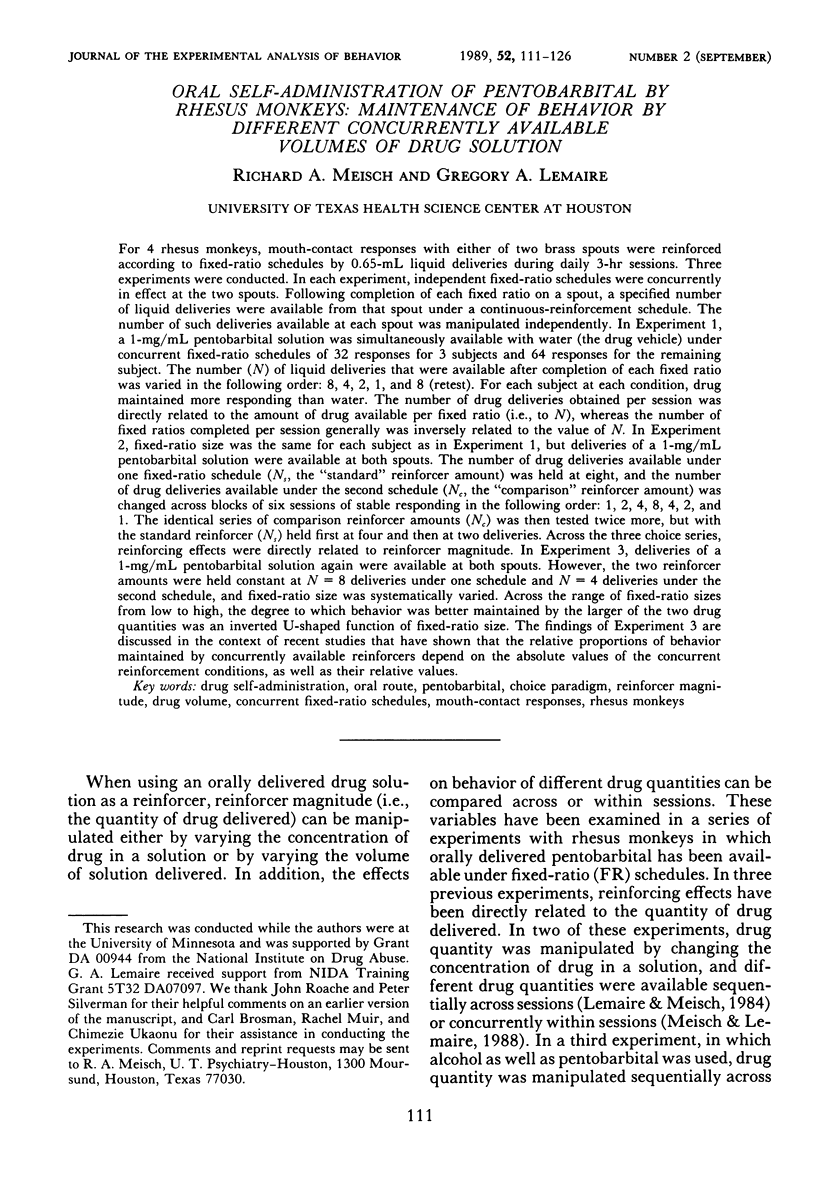
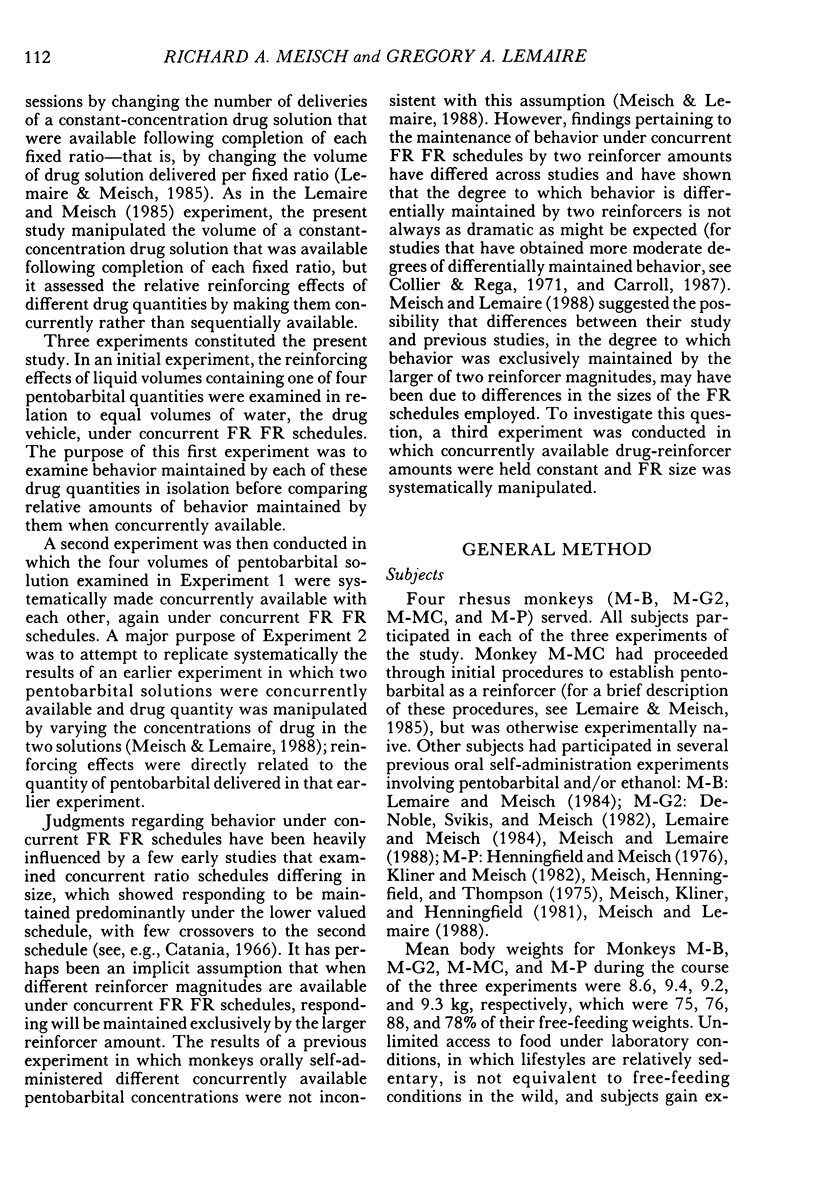
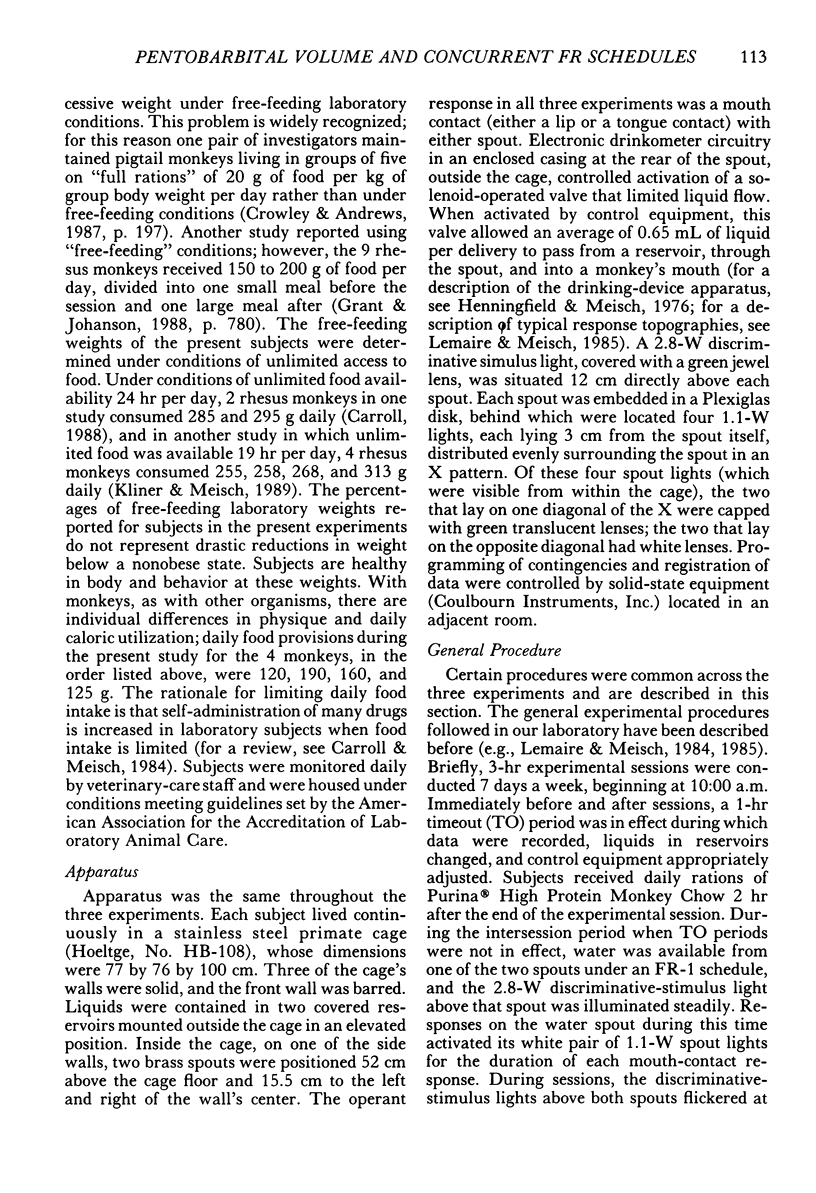
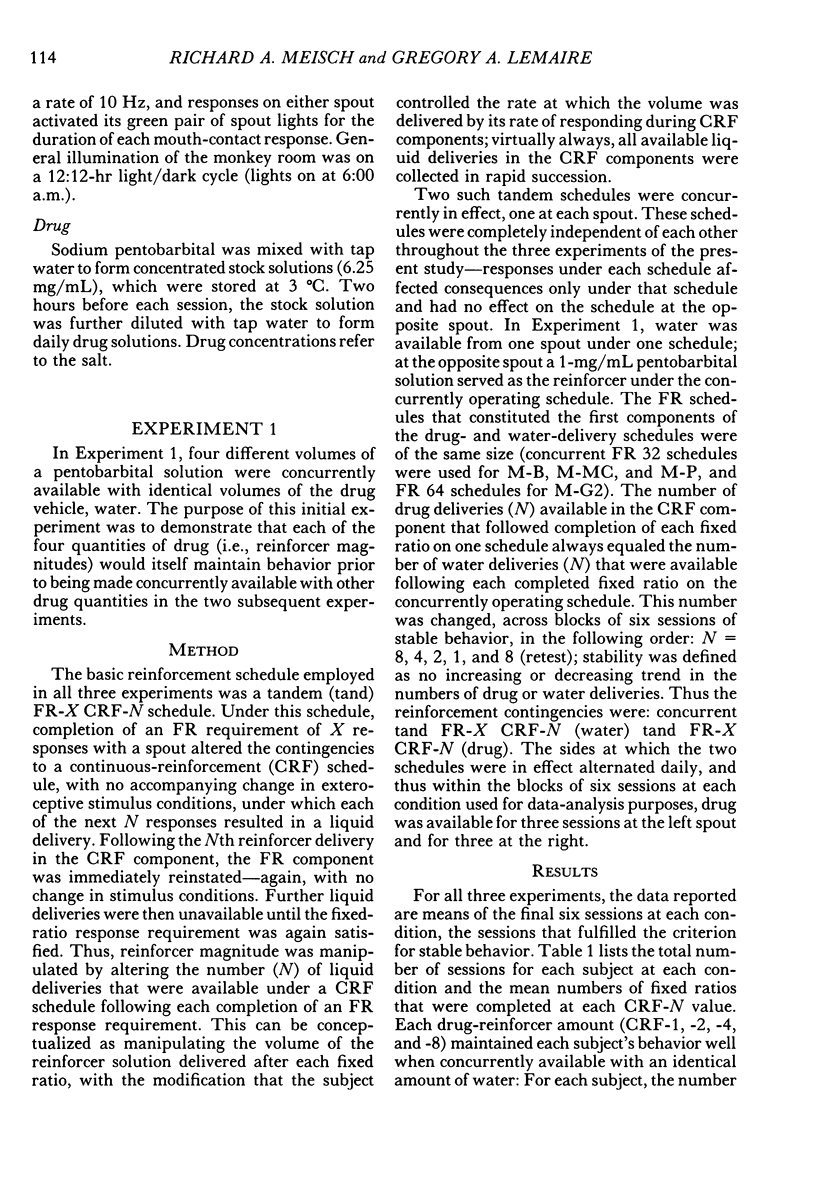
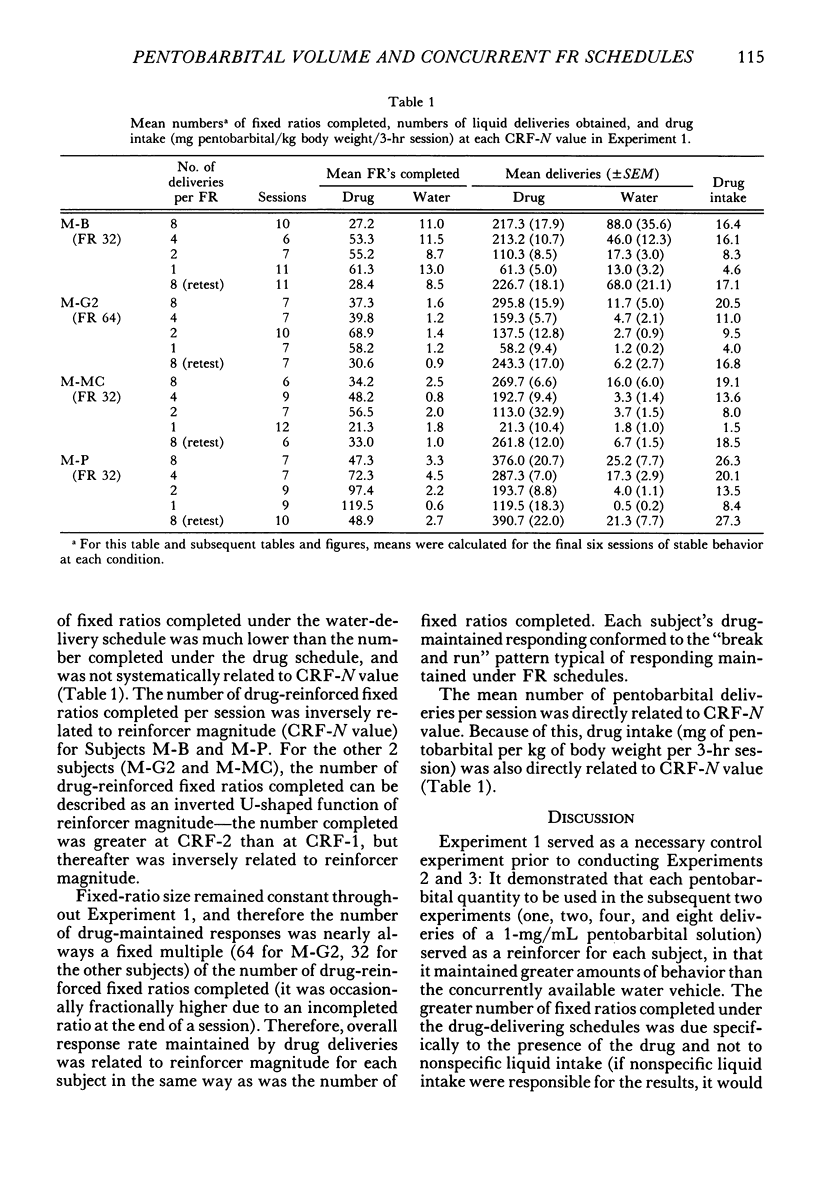
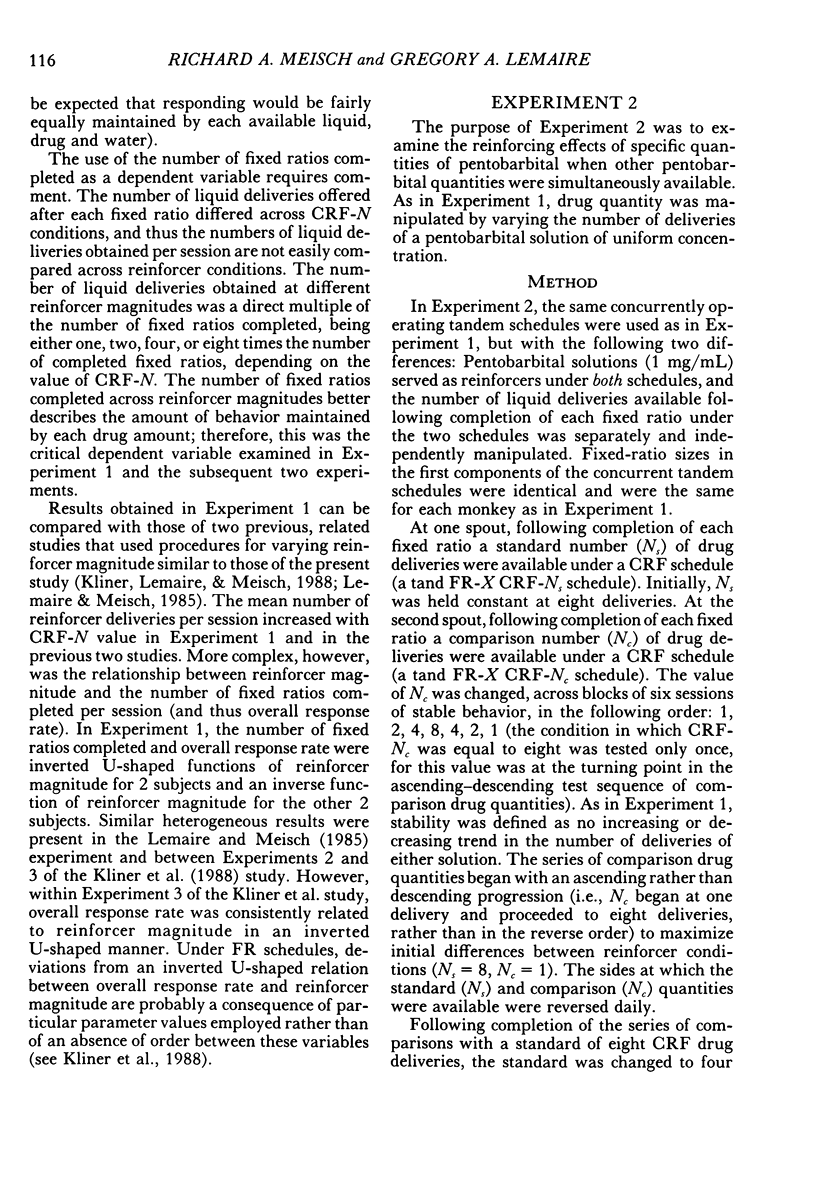
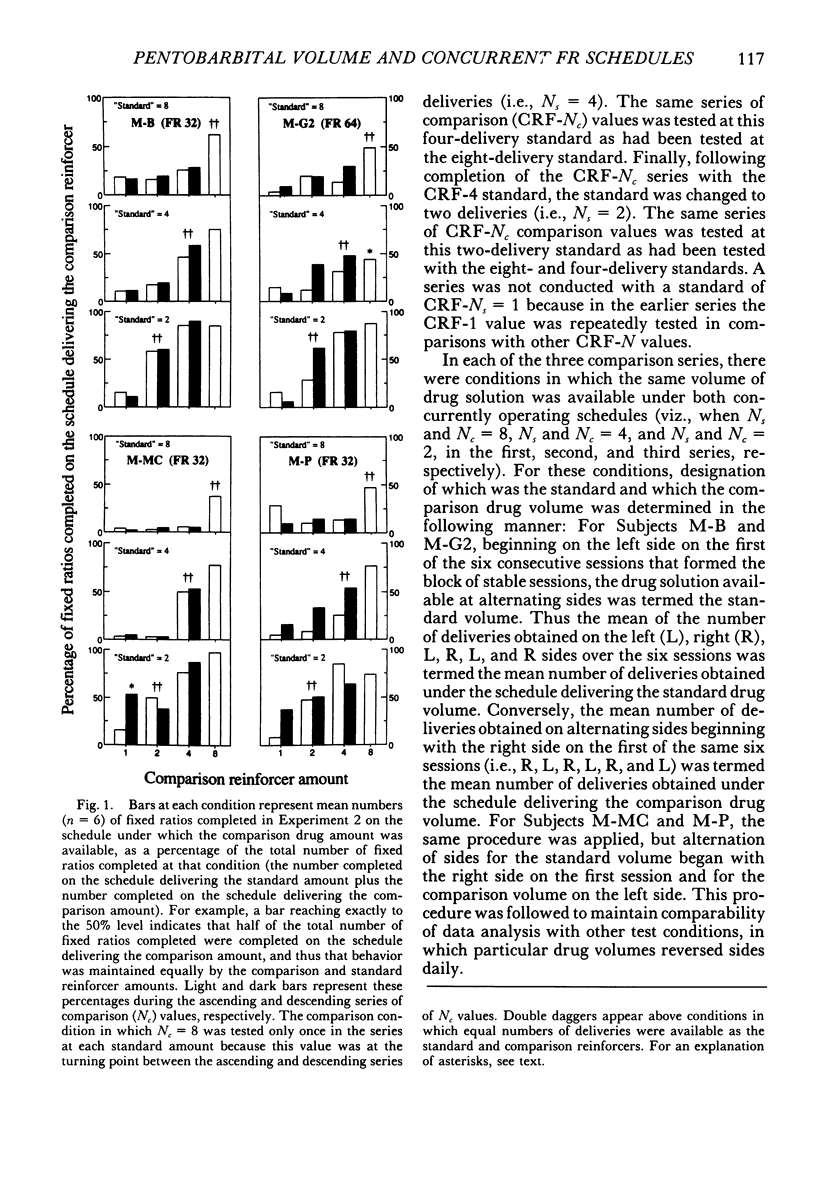
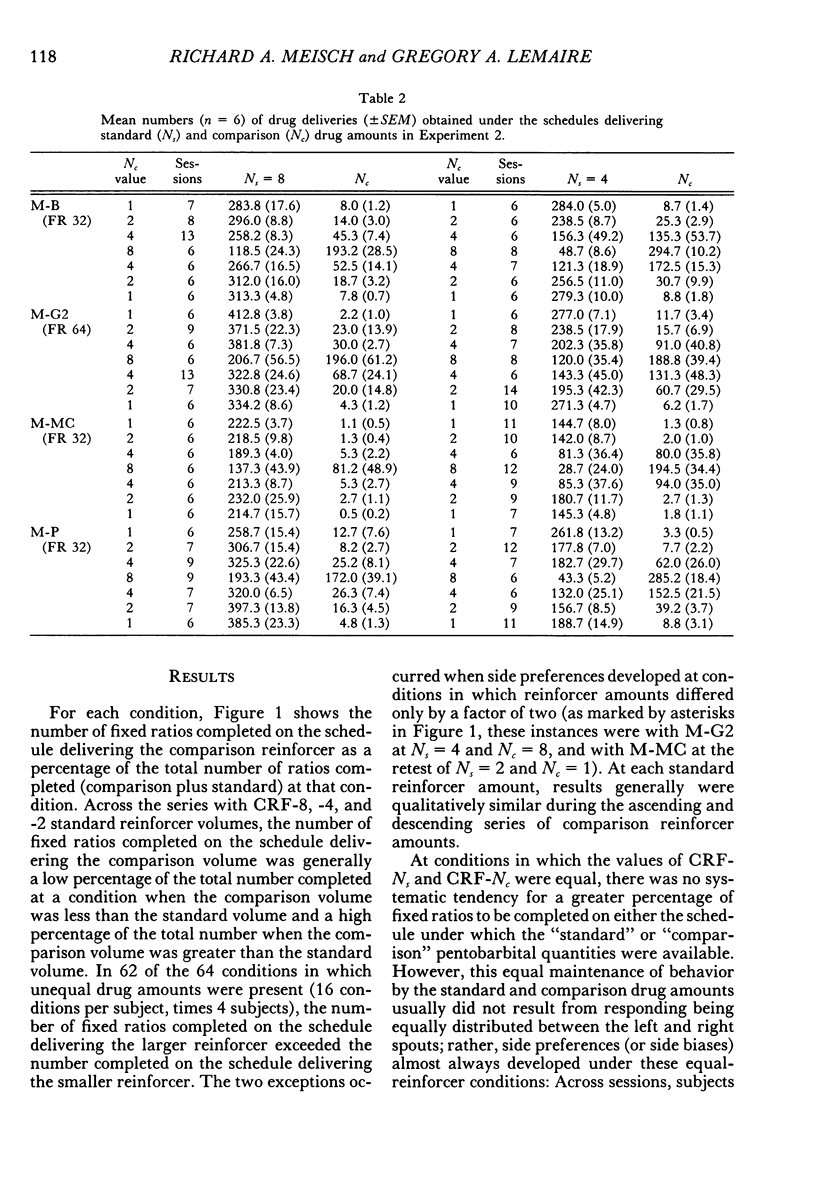
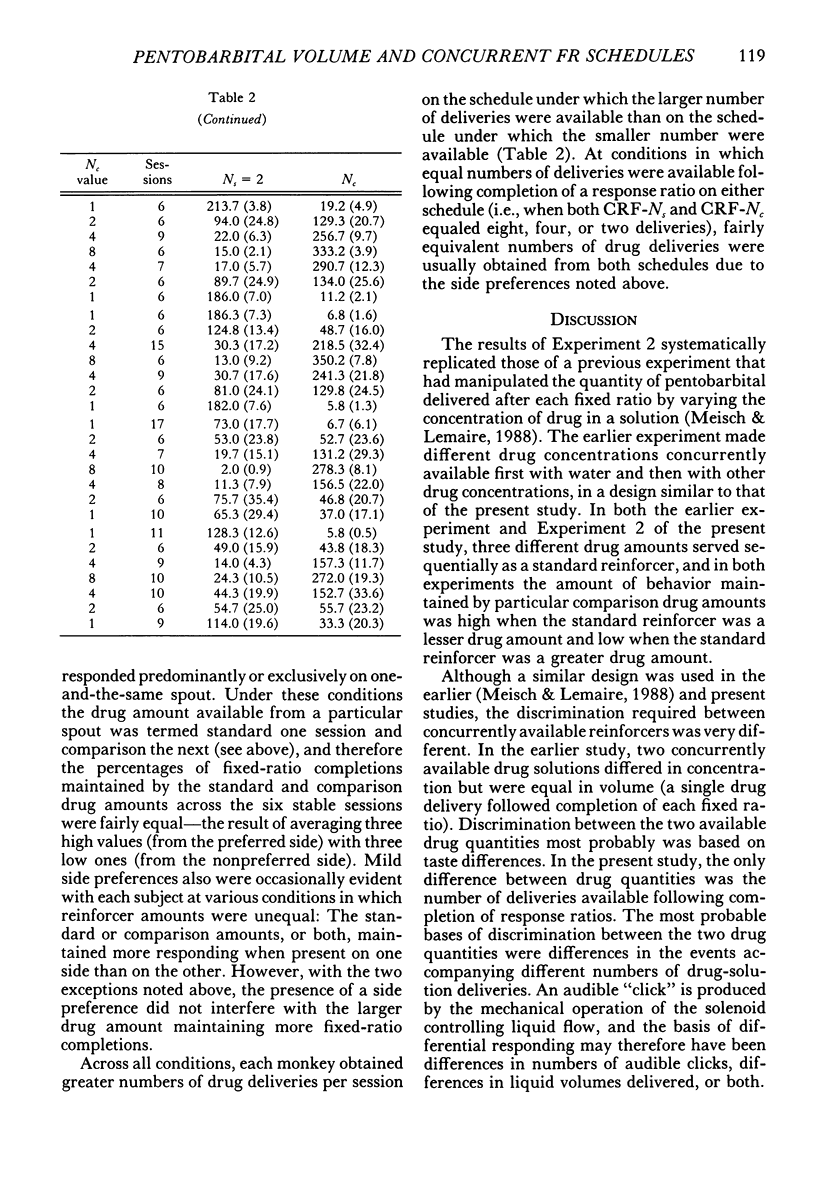
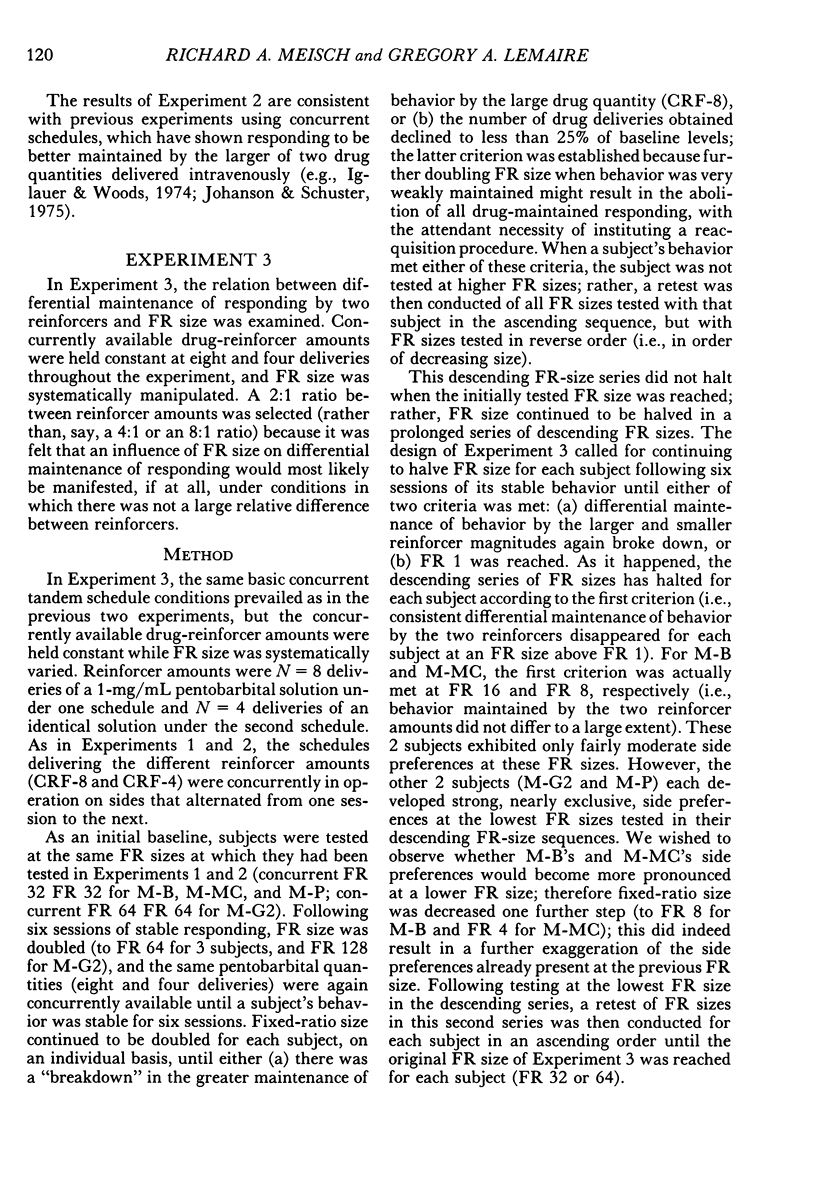
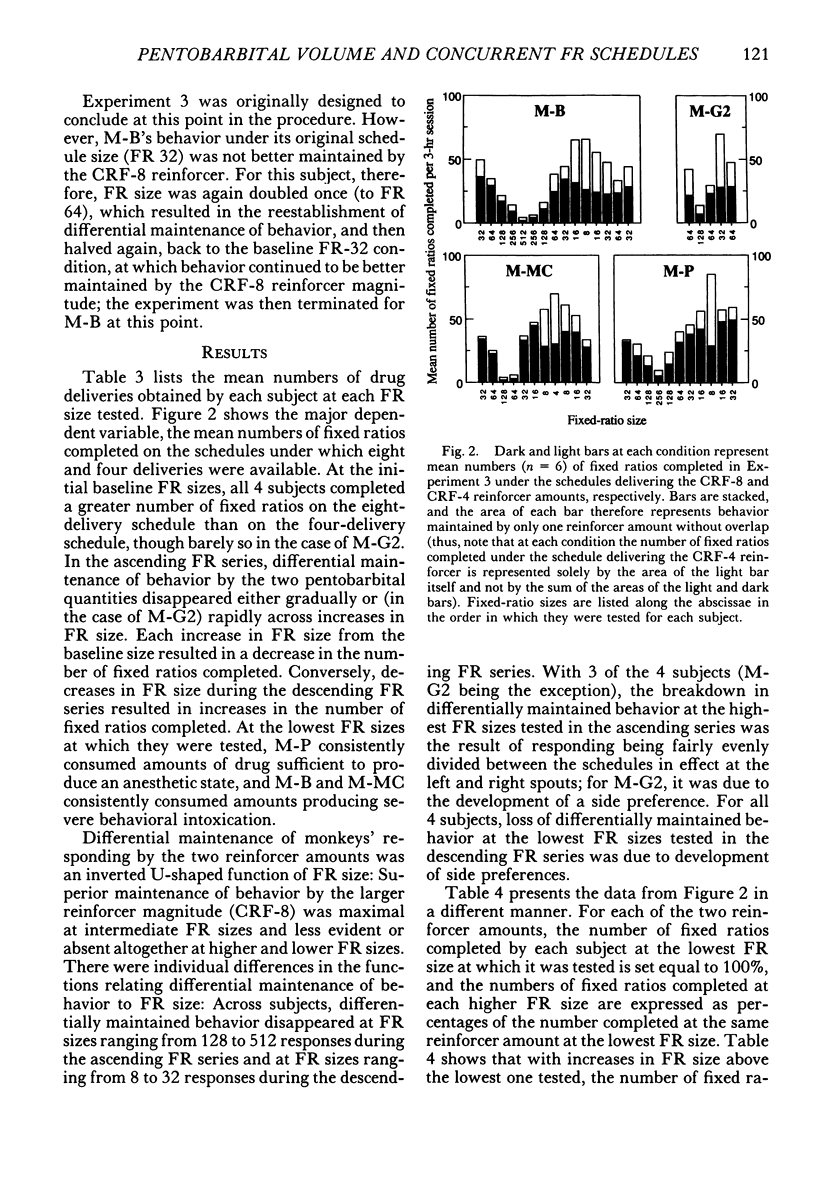
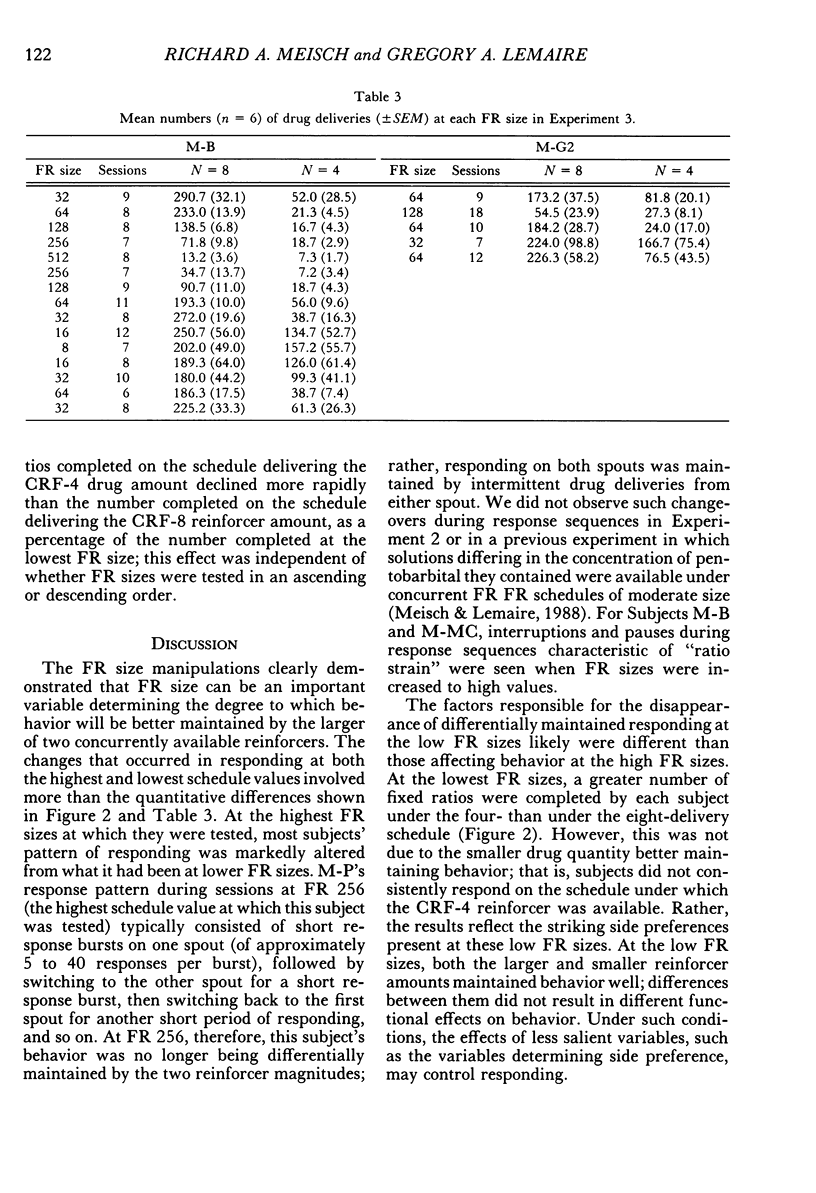
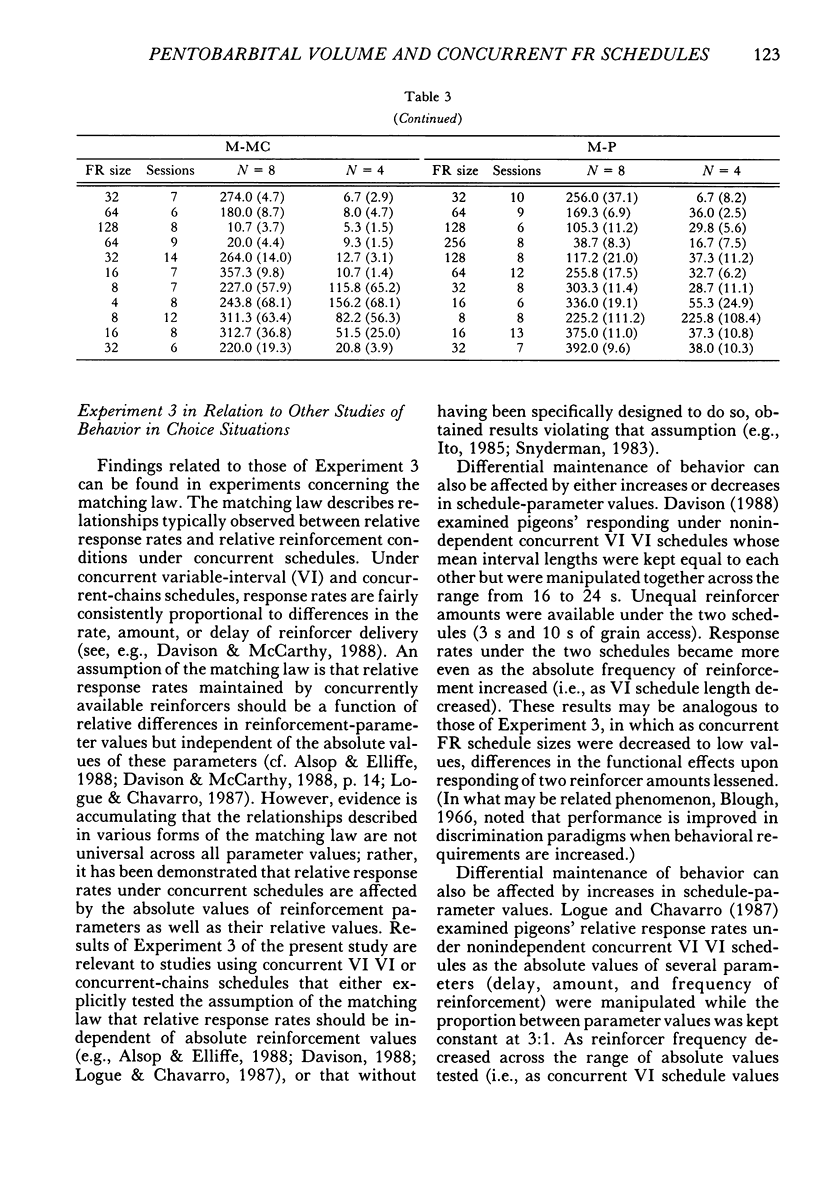
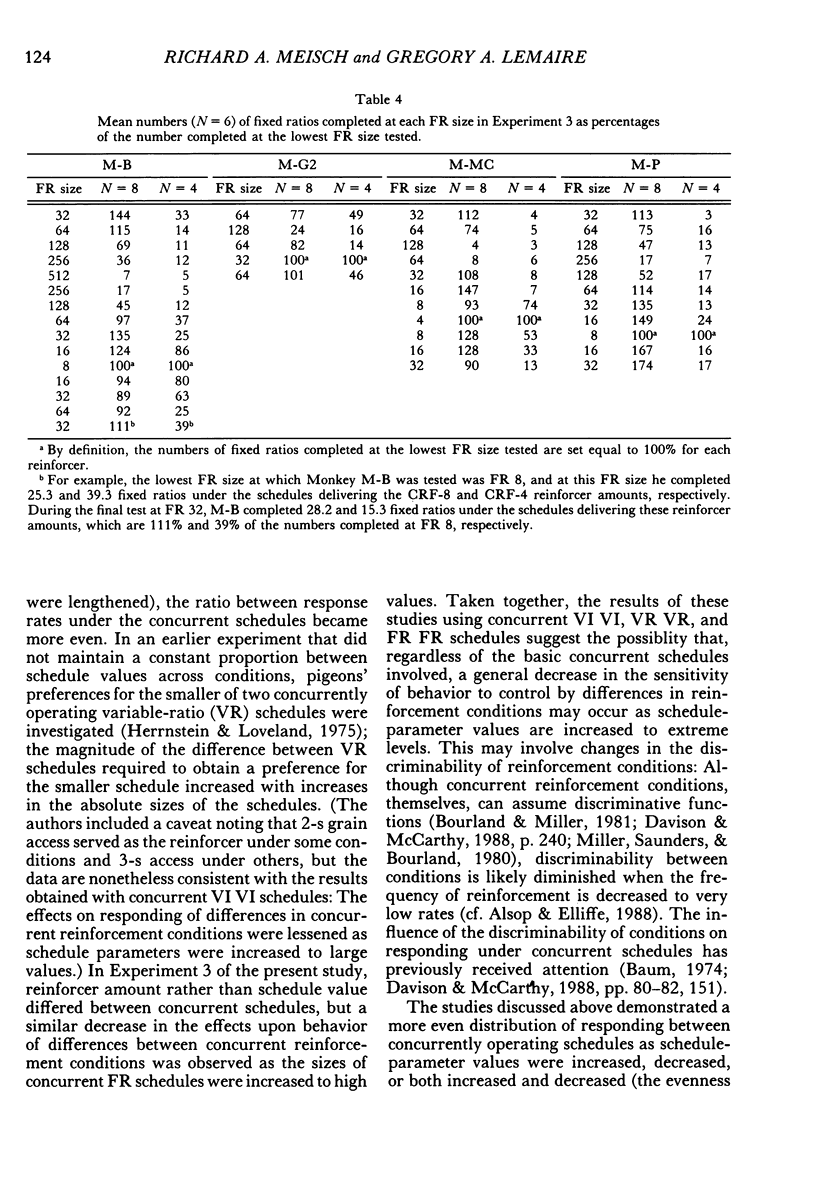
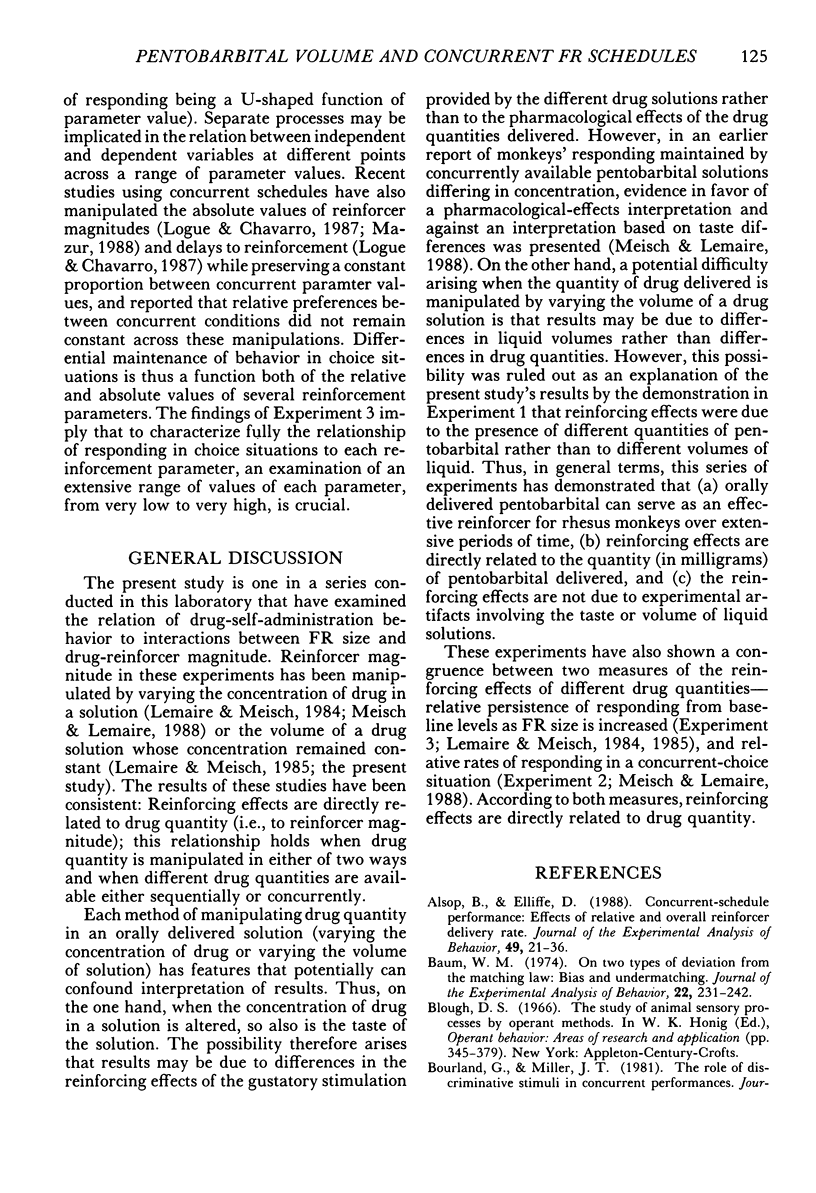
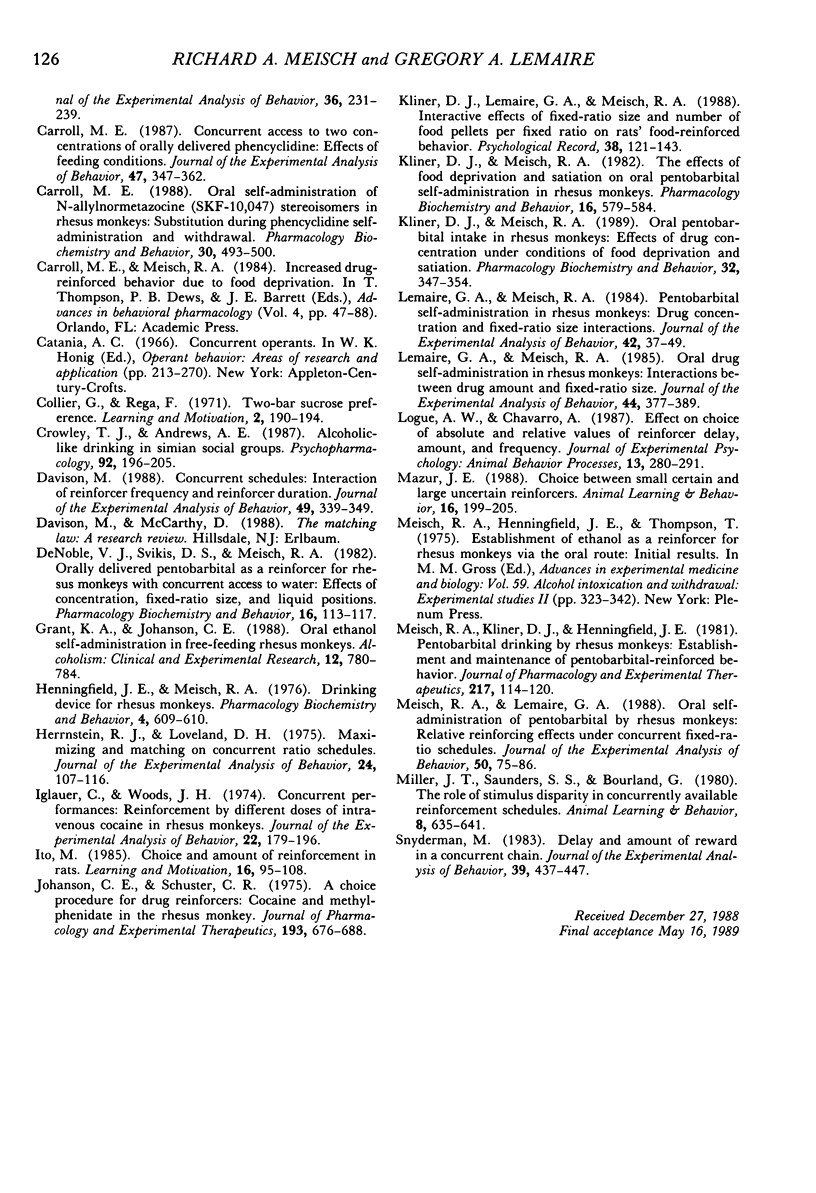
Selected References
These references are in PubMed. This may not be the complete list of references from this article.
- Alsop B., Elliffe D. Concurrent-schedule performance: Effects of relative and overall reinforcer rate. J Exp Anal Behav. 1988 Jan;49(1):21–36. doi: 10.1901/jeab.1988.49-21. [DOI] [PMC free article] [PubMed] [Google Scholar]
- Baum W. M. On two types of deviation from the matching law: bias and undermatching. J Exp Anal Behav. 1974 Jul;22(1):231–242. doi: 10.1901/jeab.1974.22-231. [DOI] [PMC free article] [PubMed] [Google Scholar]
- Carroll M. E. Concurrent access to two concentrations of orally delivered phencyclidine: effects of feeding conditions. J Exp Anal Behav. 1987 May;47(3):347–362. doi: 10.1901/jeab.1987.47-347. [DOI] [PMC free article] [PubMed] [Google Scholar]
- Carroll M. E. Oral self-administration of N-allylnormetazocine (SKF-10,047) stereoisomers in rhesus monkeys: substitution during phencyclidine self-administration and withdrawal. Pharmacol Biochem Behav. 1988 Jun;30(2):493–500. doi: 10.1016/0091-3057(88)90486-8. [DOI] [PubMed] [Google Scholar]
- Crowley T. J., Andrews A. E. Alcoholic-like drinking in simian social groups. Psychopharmacology (Berl) 1987;92(2):196–205. doi: 10.1007/BF00177915. [DOI] [PubMed] [Google Scholar]
- Davison M. Concurrent schedules: Interaction of reinforcer frequency and reinforcer duration. J Exp Anal Behav. 1988 May;49(3):339–349. doi: 10.1901/jeab.1988.49-339. [DOI] [PMC free article] [PubMed] [Google Scholar]
- DeNoble V. J., Svikis D. S., Meisch R. A. Orally delivered pentobarbital as a reinforcer for rhesus monkeys with concurrent access to water: effects of concentration, fixed-ratio size, and liquid positions. Pharmacol Biochem Behav. 1982 Jan;16(1):113–117. doi: 10.1016/0091-3057(82)90021-1. [DOI] [PubMed] [Google Scholar]
- Grant K. A., Johanson C. E. Oral ethanol self-administration in free-feeding rhesus monkeys. Alcohol Clin Exp Res. 1988 Dec;12(6):780–784. doi: 10.1111/j.1530-0277.1988.tb01345.x. [DOI] [PubMed] [Google Scholar]
- Henningfield J. E., Meisch R. A. Drinking device for rhesus monkeys. Pharmacol Biochem Behav. 1976 May;4(5):609–610. doi: 10.1016/0091-3057(76)90204-5. [DOI] [PubMed] [Google Scholar]
- Herrnstein R. J., Loveland D. H. Maximizing and matching on concurrent ratio schedules. J Exp Anal Behav. 1975 Jul;24(1):107–116. doi: 10.1901/jeab.1975.24-107. [DOI] [PMC free article] [PubMed] [Google Scholar]
- Iglauer C., Woods J. H. Concurrent performances: reinforcement by different doses of intravenous cocaine in rhesus monkeys. J Exp Anal Behav. 1974 Jul;22(1):179–196. doi: 10.1901/jeab.1974.22-179. [DOI] [PMC free article] [PubMed] [Google Scholar]
- Johanson C. E., Schuster C. R. A choice procedure for drug reinforcers: cocaine and methylphenidate in the rhesus monkey. J Pharmacol Exp Ther. 1975 May;193(2):676–688. [PubMed] [Google Scholar]
- Kliner D. J., Meisch R. A. Oral pentobarbital intake in rhesus monkeys: effects of drug concentration under conditions of food deprivation and satiation. Pharmacol Biochem Behav. 1989 Jan;32(1):347–354. doi: 10.1016/0091-3057(89)90253-0. [DOI] [PubMed] [Google Scholar]
- Kliner D. J., Meisch R. A. The effects of food deprivation and satiation on oral pentobarbital self-administration in rhesus monkeys. Pharmacol Biochem Behav. 1982 Apr;16(4):579–584. doi: 10.1016/0091-3057(82)90419-1. [DOI] [PubMed] [Google Scholar]
- Lemaire G. A., Meisch R. A. Oral drug self-administration in rhesus monkeys: interactions between drug amount and fixed-ratio size. J Exp Anal Behav. 1985 Nov;44(3):377–389. doi: 10.1901/jeab.1985.44-377. [DOI] [PMC free article] [PubMed] [Google Scholar]
- Lemaire G. A., Meisch R. A. Pentobarbital self-administration in rhesus monkeys: drug concentration and fixed-ratio size interactions. J Exp Anal Behav. 1984 Jul;42(1):37–49. doi: 10.1901/jeab.1984.42-37. [DOI] [PMC free article] [PubMed] [Google Scholar]
- Meisch R. A., Kliner D. J., Henningfield J. E. Pentobarbital drinking by rhesus monkeys: establishment and maintenance of pentobarbital-reinforced behavior. J Pharmacol Exp Ther. 1981 Apr;217(1):114–120. [PubMed] [Google Scholar]
- Meisch R. A., Lemaire G. A. Oral self-administration of pentobarbital by rhesus monkeys: relative reinforcing effects under concurrent fixed-ratio schedules. J Exp Anal Behav. 1988 Jul;50(1):75–86. doi: 10.1901/jeab.1988.50-75. [DOI] [PMC free article] [PubMed] [Google Scholar]
- Snyderman M. Delay and amount of reward in a concurrent chain. J Exp Anal Behav. 1983 May;39(3):437–447. doi: 10.1901/jeab.1983.39-437. [DOI] [PMC free article] [PubMed] [Google Scholar]


